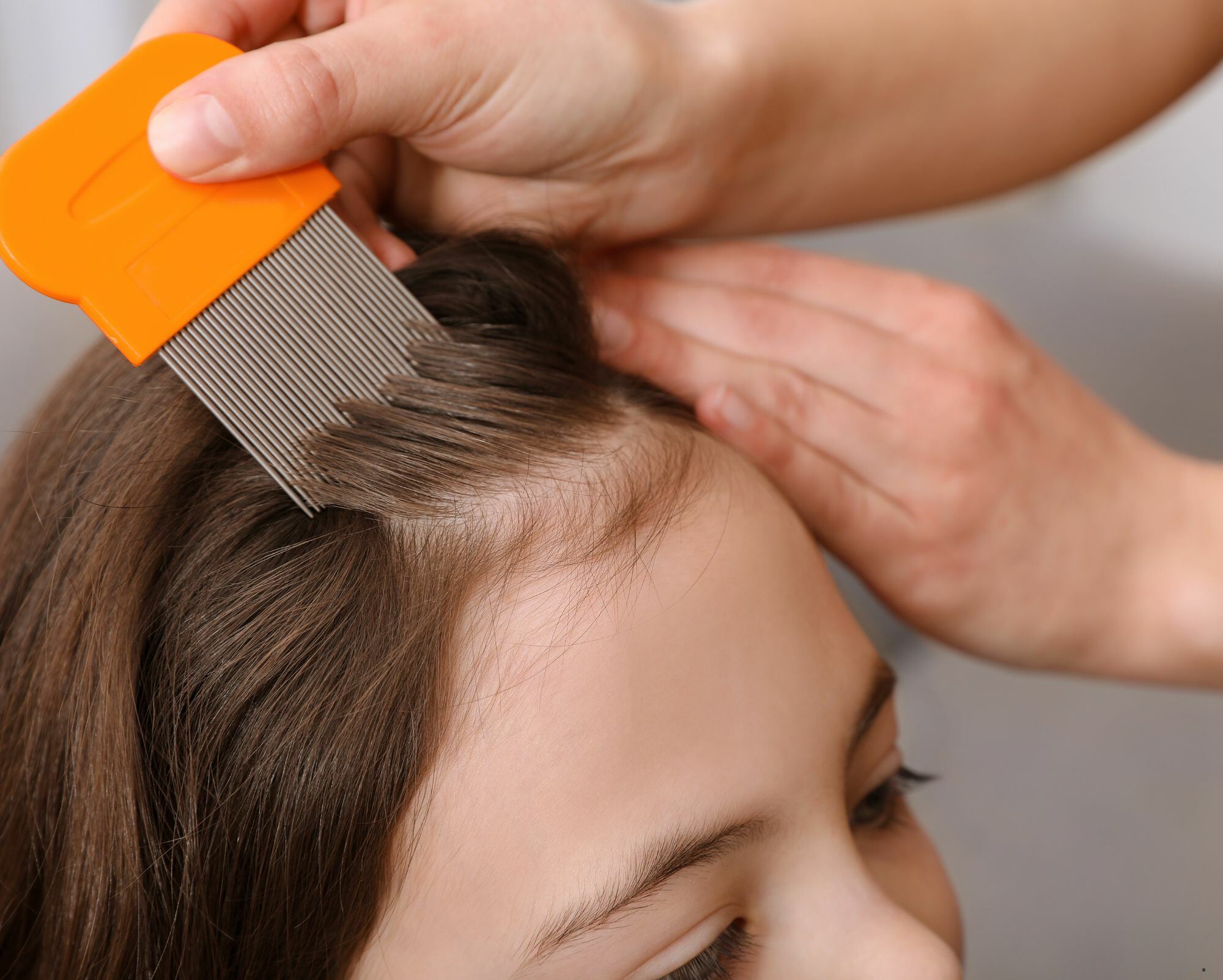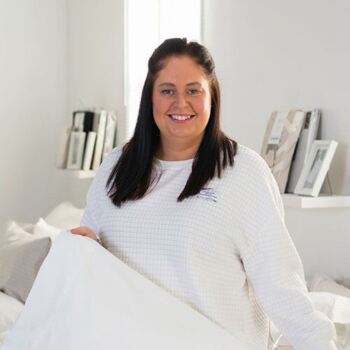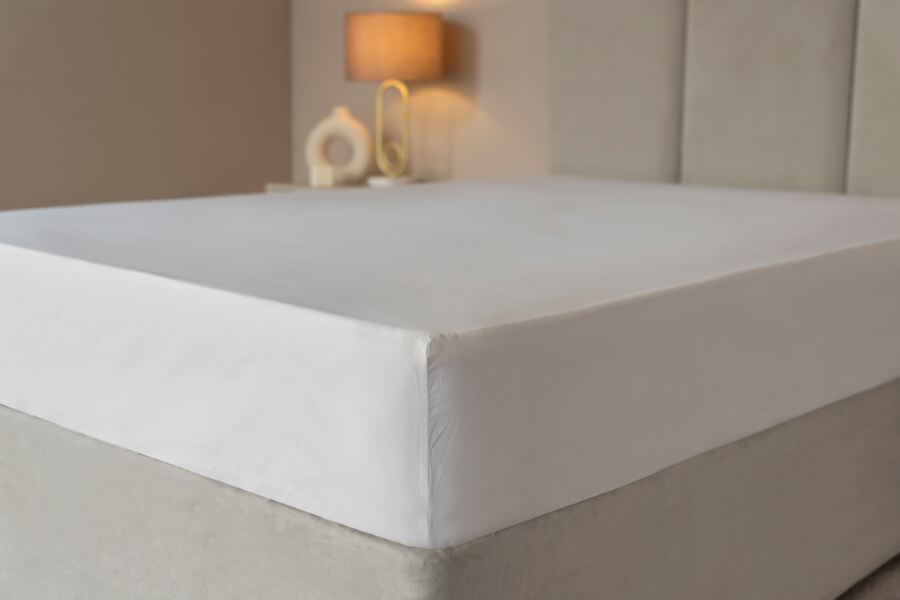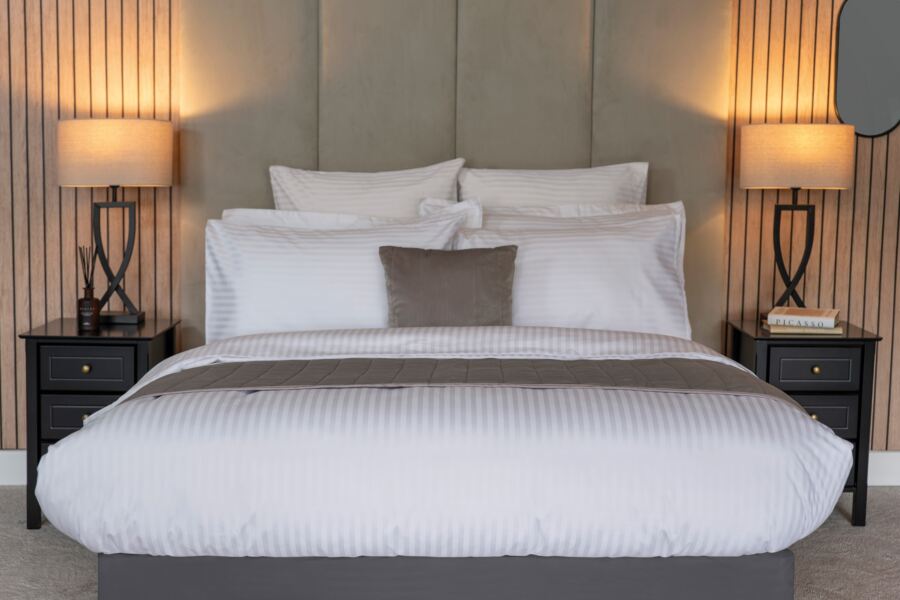Table of Contents
- Do Head Lice Live In Bed Linen?
- Can Head Lice Live In Your Bed Linen?
- Common Symptoms Of Head Lice
- How To Treat Head Lice
- FAQs
- Final Thoughts
Do Head Lice Live In Bed Linen?
If you (or your little ones) are struggling with head lice, one of the first questions you may ask yourself is 'Do lice live on pillows?'. Or worse: 'Can lice live and lay eggs in my linens?'.
While this is a common concern when it comes to head lice, you'll be glad to know that they can't survive in your bedding. Instead, they need to feed off the scalp to survive.
In this guide, we'll help you deal with this pesky problem for good.
Can Head Lice Live In Your Bed Linen?
Although the fear of head lice living in your bed linens may be looming over your head, there's no need to panic. Head lice do not live in bed linens, since they are parasites that need to feed on your scalp to survive.
In fact, head lice can only survive for 48 hours after they fall off the host scalp since they need warmth and blood supply from the scalp. However, there are several types of lice, so it's important to know which one you're dealing with to protect yourself and others in your household effectively.

Types of lice
Head lice
As the name suggests, head lice live on the scalp and in hair strands. They are also spread through head-to-head contact. Since head lice don't live for longer than 48 hours when not on the head, it's usually not necessary to treat your bedding. After all, they don't live on these surfaces.
However, it is important to remember that if you're sleeping next to an infested person, you may be at risk of contracting lice if your head is close to theirs.
Body lice
Body lice are the culprits behind lice eggs and creepy crawlies in your clothes and bedding. They also spread through contact with infested linens and clothing and can live much longer than head lice.
If you have a body lice infestation, it's essential to wash and dry your bedding and clothes in water at high heat to kill the lice.
Pubic lice
Pubic lice live in pubic hair and other coarse body hair and are primarily spread through sexual contact. Fortunately (and similar to head lice), pubic lice need to be on the body to survive and won't live long once they fall off.
Although they can't live in your linens, it may be a good idea to wash your bedding to prevent re-infestation.
Common Symptoms Of Head Lice
So, how exactly do you differentiate head lice from other types? Well, there are a few tell-tale signs and symptoms of head lice that you'll want to look out for. This will help you target what you're dealing with and whether you should be concerned about lice in your home.
Of course, if you want complete peace of mind, you can always wash your bedding in hot water and dry it on a high-heat cycle. This will get rid of lice that may be lingering in your linens (including dead lice that may have detached from your head).
Itchiness
Itching is probably the most common and noticeable symptom of head lice. What you may not know is that the itchiness is typically caused by an allergic reaction to the saliva or faeces of the lice.
This symptom may not appear until 2 to 6 weeks after the infestation begins, though, since it takes time for the allergic reaction to develop. So, if your head starts to itch, it's likely the lice have already been present for at least two weeks.

Red bumps or sores
Since you may be scratching at your scalp, it's common for red bumps or sores to appear on your scalp, neck, or even behind your ears.
Remember: If you continue to scratch over these sores, it can lead to swollen lymph nodes, tender skin, bleeding, and oozing. If this happens, it can cause infections and may need treatments like medications or antibiotics.
So if you want to avoid a trip to the doctor and a course of antibiotics, try not to scratch your scalp if you know you have lice.
Difficulty sleeping
Lice are generally more active at night, which can make it really difficult to get a good night's sleep. This can affect anyone but can be particularly challenging for children who have head lice infestations. The reason that you're more likely to feel head lice at night is because this is when they tend to move around and feed.
When to see a doctor
If you're experiencing these symptoms but can't find any head lice and nits, it may be time to consult your doctor. Sometimes, the symptoms of head lice can persist even once the lice have been removed, or there could be another reason for your symptoms. Either way, it's important to get advice from your local GP.
How To Treat Head Lice
There are several ways to rid your head (and therefore your home and linen) of head lice. It's important to get rid of lice as soon as possible to prevent them from spreading or causing complications like infections from scratching.
Remember, when you remove lice, you should be sure to remove the adult lice and the nits. Adult head lice usually look like small, sesame seed-sized bugs, while the nits can be hard to see and generally don't move around.
Pro tip: Although head lice don't live in bed linen, it's always a good idea to take some precautionary measures against these pesky parasites. This includes washing and changing your bed sheets as often as possible until the infestation has been dealt with.
Manual lice removal
To manually remove nits and lice, you can use a lice comb which is usually made from wood or metal and has fine, closely spaced teeth.
Begin by wetting the hair and applying a conditioner to help the comb glide through. Then, part the hair in sections and run the comb through each from the scalp to the ends.
Remember to wipe or rinse the comb after each pass to remove the lice from the comb. Otherwise, you may be making the problem worse or your comb may not pick up any other lice.
If your symptoms persist, you may need to repeat this process every 2 to 3 days for around two weeks. This helps to ensure that all the lice (including freshly hatched lice eggs) are removed.
Head lice shampoos
Lice shampoos are designed to be much gentler on your scalp and have more natural ingredients compared to chemical treatments. They can also be used in the same way as regular shampoo, applied to wet or dry hair, and left on for a few minutes before rinsing.
Much like the process of combing, you will need to repeat the process of shampooing with these special formulations for several days. It's also typically more effective when you use a lice comb since shampoo may not completely remove the nits.
Chemical treatments
Permethrin is a pretty common chemical used for treating lice and can be super effective. It should generally be applied to dry hair and left on for 5 to 10 minutes before rinsing. And, while other treatments may be available, permethrin is the most commonly used chemical.
Just remember to follow the instructions on the label to use these chemicals safely - especially when you're performing a head lice treatment for children.

FAQs
Can I sleep in my bed if I have lice?
Yes, you can sleep in your bed if you have lice. Still, it's essential to treat your scalp as quickly as possible to avoid spreading the infestation. Just remember that you can spread head lice through head-to-head or hair-to-hair contact, so if you share a bed, it's important to be mindful. And, just to be safe, it may be best not to share your bed until you have gotten rid of the lice.
How long do lice live on a mattress?
Lice don't live on pillows and sheets or in mattresses. In fact, once they fall off your head, they're likely to die pretty quickly. While you can typically find them on your mattress after they've fallen off, they're likely already dead and it's not necessary to treat your mattress.
Should I clean my bedding after a head lice infestation?
Although it's not necessary to clean your bedding after head lice, you can give yourself some peace of mind by doing so. Just be sure to use hot water and a hot drying cycle when you wash your bedding. Or, if your bedding isn't machine washable, you can seal it in a plastic bag for a few days to ensure the lice are dead.
Final Thoughts
Now that you know that those pesky lice aren't burrowing into your bed linens, you may be able to get a better night's sleep. Just remember to pay close attention to the type of lice infestation you're dealing with to treat it properly.











